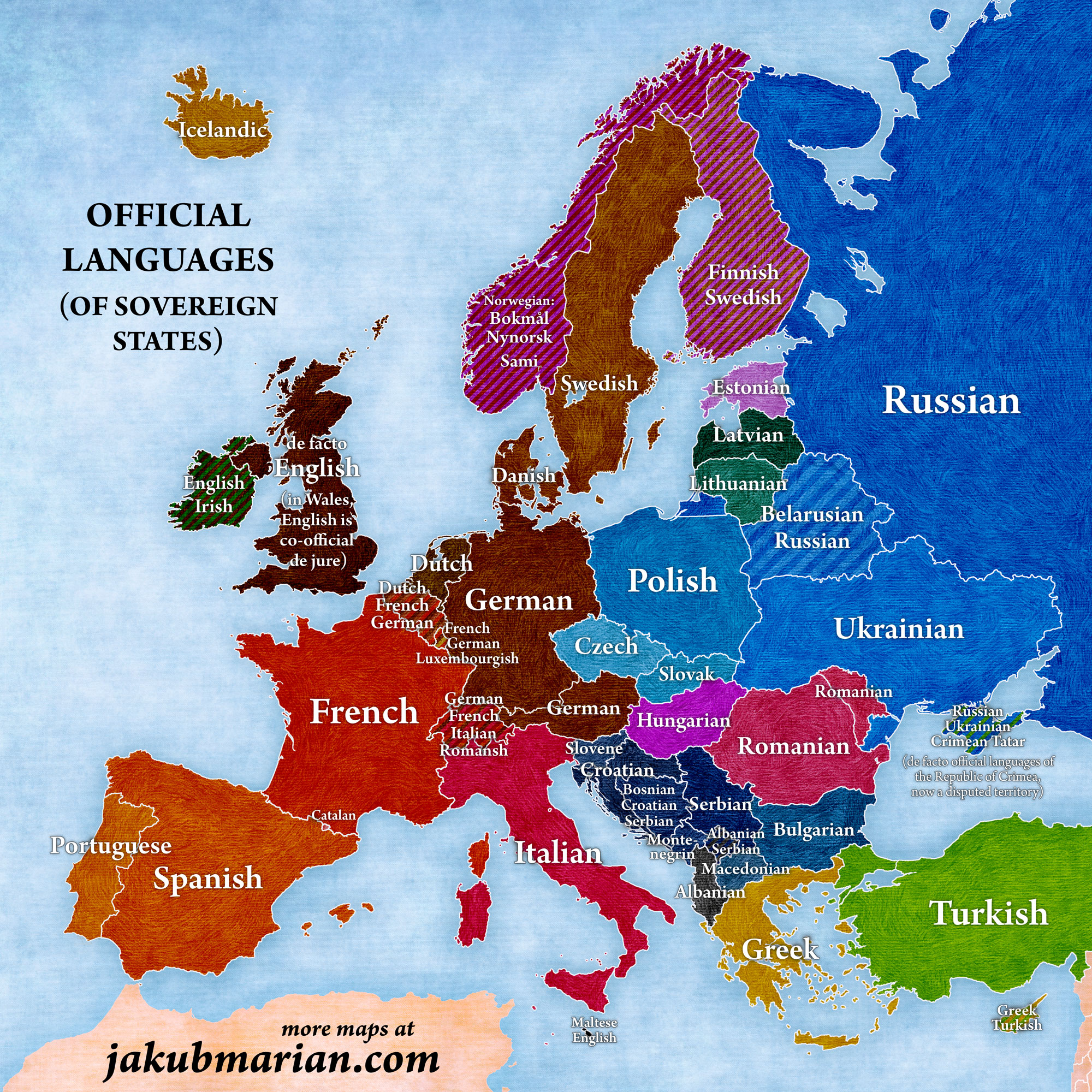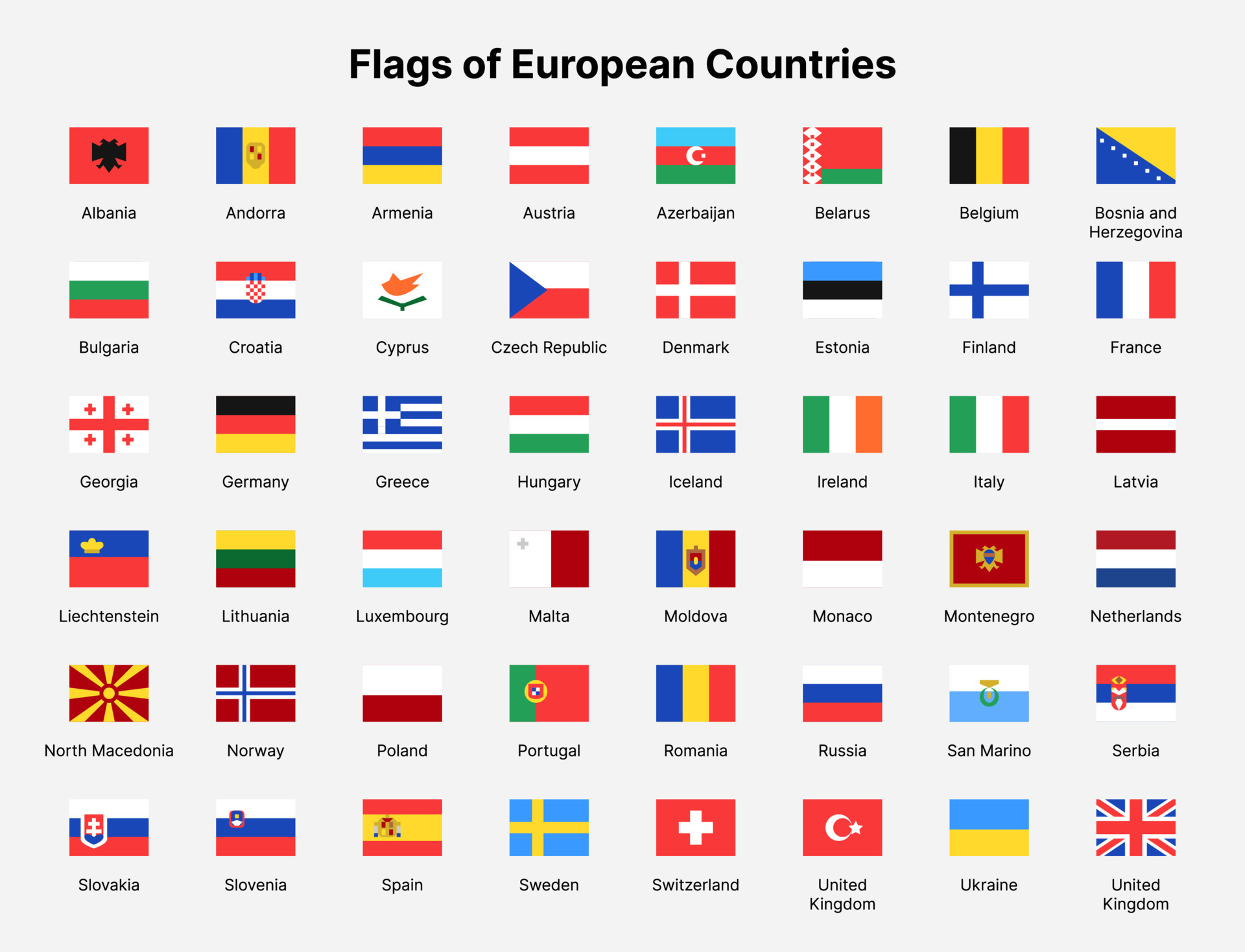European Car Brand Logos: A Deep Dive into Design, Heritage, and Identity
European Car Brand Logos: A Deep Dive into Design, Heritage, and Identity cars.truckstrend.com
In the vast and competitive automotive landscape, a car’s brand logo is far more than just a decorative emblem; it’s the visual cornerstone of its identity, a condensed story of heritage, innovation, and aspiration. European car brand logos, in particular, stand as testaments to centuries of design excellence, engineering prowess, and rich cultural narratives. From the precision-engineered stars and rings of Germany to the passionate beasts and crests of Italy, and the steadfast symbols of Scandinavia, these emblems communicate trust, evoke emotion, and instantly signify a brand’s core values to a global audience. Understanding these logos means delving into their historical roots, artistic choices, and the powerful messages they convey. This comprehensive article will explore the fascinating world of European car brand logos, dissecting their importance, symbolism, and evolution, offering insights into their enduring appeal.
The Art of Branding: Why Logos Matter
European Car Brand Logos: A Deep Dive into Design, Heritage, and Identity
A car brand logo is the most immediate and recognizable element of a company’s visual identity. It’s the first impression, a silent ambassador that encapsulates the brand’s essence. For European car manufacturers, whose reputations are often built on a legacy of craftsmanship, performance, and luxury, their logos serve several critical functions:
- Instant Recognition: In a crowded market, a distinctive logo ensures a brand stands out and is easily identifiable, whether on a showroom floor or a bustling highway.
- Brand Identity and Values: Logos communicate a brand’s core philosophy. Mercedes-Benz’s star signifies universal reach, while Ferrari’s prancing horse embodies speed and passion.
- Trust and Reliability: A well-established, consistent logo builds consumer confidence, signaling a reputable and dependable product.
- Emotional Connection: Beyond utility, logos often evoke strong emotions, fostering loyalty and aspiration among consumers. Owning a car with a particular logo becomes a statement about one’s values or lifestyle.
- Heritage and Legacy: Many European car logos are steeped in history, carrying forward traditions and stories that resonate with enthusiasts and imbue the brand with a sense of timelessness.

Historical Roots and Evolution: Stories Etched in Chrome
The origins of many European car logos are as rich and varied as the companies themselves, often intertwined with family histories, regional symbols, and industrial breakthroughs. Unlike modern designs that might emerge from marketing briefs, many early logos evolved organically, reflecting the founders’ aspirations or the local context.
Take, for instance, the Mercedes-Benz three-pointed star. Conceived by Daimler-Motoren-Gesellschaft (DMG) in 1909, it symbolized Gottlieb Daimler’s vision for motorized transport "on land, on water, and in the air." This bold declaration of universal ambition has remained remarkably consistent for over a century.
Similarly, the BMW roundel, with its blue and white quadrants, is widely believed to represent a stylized airplane propeller against a blue sky, referencing the company’s early aviation engine manufacturing. While BMW officially states it’s a representation of the Bavarian flag, the propeller myth persists, adding to its legendary status.
Audi’s four interlocking rings, introduced in 1932, are a direct visual representation of the merger of four previously independent automobile manufacturers – Audi, DKW, Horch, and Wanderer – into Auto Union AG. Each ring signifies one of these founding companies, symbolizing unity and strength through collaboration.

Many early logos were influenced by heraldry and regional coats of arms, reflecting a strong sense of place and lineage. Porsche’s crest, for example, combines elements of the Free People’s State of Württemberg’s coat of arms with the leaping horse from Stuttgart’s city seal, paying homage to its German roots and the city where it was founded. Over time, while designs have been streamlined for modernity and digital adaptability, the core symbolism and historical essence of these logos have been meticulously preserved, acting as a bridge between the past and the future.
Common Themes and Symbolism in European Car Logos
European car brand logos showcase a fascinating array of design choices, often drawing from shared symbolic wellsprings:
- Animals of Power and Grace: Perhaps the most iconic examples come from Italy. Ferrari’s "Cavallino Rampante" (prancing horse) was the emblem of a WWI Italian fighter ace, given to Enzo Ferrari’s racing team as a good luck charm. It symbolizes untamed power, speed, and agility. Not to be outdone, Lamborghini’s "Raging Bull" was chosen by founder Ferruccio Lamborghini, a Taurus, who had a passion for bullfighting. It represents brute strength, aggression, and unbridled performance. In France, Peugeot’s lion, first appearing in 1847 on saw blades, symbolized the strength, flexibility, and sharpness of the company’s products. It evolved to represent the brand’s resilience and dynamic performance.
- Geometric Precision and Unity: German brands often favor geometric shapes, reflecting their focus on engineering and precision. Mercedes-Benz’s star is a perfect example of geometric simplicity conveying a grand vision. Audi’s rings speak of seamless integration and collective strength. Even Volkswagen’s interlocking "V" and "W" are a study in clean, functional design. These shapes often convey order, reliability, and forward-thinking innovation.
- Heraldry, Family Crests, and Regional Pride: As seen with Porsche’s elaborate crest, many logos incorporate elements from city or regional coats of arms, imbuing the brand with a sense of historical legitimacy, luxury, and exclusive heritage. Alfa Romeo’s logo, for instance, features the red cross of Milan and the "Biscione," a serpent devouring a Saracen man, from the Visconti family crest – symbols deeply rooted in Milanese history. These logos often convey a sense of nobility and deep-seated tradition.
- Letters and Initials: Simplicity often reigns with direct use of company initials. BMW (Bayerische Motoren Werke) and Rolls-Royce (RR) are prime examples, relying on the strength of their names and legacies. These logos often convey a sense of established authority and directness.
- Abstract Concepts and Values: Some logos convey deeper philosophical meanings. Volvo’s "iron mark" symbol, an ancient alchemical sign for iron, was chosen to represent strength, durability, and safety – core tenets of the Swedish brand. The diagonal slash across the grille was originally just a mounting point for the badge, but became an iconic part of the brand’s visual identity.

Iconic European Car Brand Logos: A Closer Look
Let’s explore some of the most recognized European car brand logos and their profound meanings:
- Mercedes-Benz (Germany): The Three-Pointed Star
- Description: A silver three-pointed star encircled by a ring.
- Symbolism: Represents Daimler’s ambition for universal motorization – dominating land, sea, and air. A symbol of quality, luxury, and innovation.
- Origin: Patented in 1909 by Daimler-Motoren-Gesellschaft (DMG).
- BMW (Germany): The Roundel
- Description: A black outer ring enclosing four quadrants of alternating blue and white.
- Symbolism: Officially, the blue and white represent the colors of the Bavarian Free State flag. Popularly, it’s thought to symbolize a white airplane propeller against a blue sky, referencing BMW’s origins in aviation engines. Represents precision, engineering, and dynamic performance.
- Origin: Evolved from Rapp Motorenwerke’s original logo in 1917.
- Audi (Germany): The Four Rings
- Description: Four interlocking silver rings.
- Symbolism: Each ring represents one of the four original companies that merged to form Auto Union AG in 1932: Audi, DKW, Horch, and Wanderer. Signifies unity, strength, and sophisticated engineering.
- Origin: Adopted following the formation of Auto Union.
- Volkswagen (Germany): The VW Monogram
- Description: An interlocking "V" placed above a "W" within a circle.
- Symbolism: Direct representation of the company name ("People’s Car"). Embodies simplicity, reliability, and accessibility.
- Origin: Designed by Franz Reimspiess in 1937, winning an internal competition.
- Ferrari (Italy): The Prancing Horse (Cavallino Rampante)
- Description: A black prancing horse on a yellow shield, topped with the Italian flag colors.
- Symbolism: Represents power, speed, passion, and good luck. The yellow background is the color of Modena, Enzo Ferrari’s birthplace.
- Origin: Given to Enzo Ferrari by the mother of WWI flying ace Francesco Baracca, whose plane carried the emblem.
- Porsche (Germany): The Stuttgart Crest
- Description: A shield featuring a black horse (Stuttgart’s coat of arms) within a smaller shield, surrounded by red and black stripes and stag antlers (Württemberg-Hohenzollern state symbols).
- Symbolism: Combines regional heritage with automotive excellence. Represents performance, luxury, and German craftsmanship.
- Origin: Designed in 1952, combining symbols of Stuttgart and the state of Württemberg.
- Volvo (Sweden): The Iron Mark
- Description: A circle with an arrow pointing diagonally upwards to the right, often with the brand name "VOLVO" in the center, and a diagonal sash across the grille.
- Symbolism: The ancient chemical symbol for iron, representing strength, durability, and reliability – core values of the safety-focused brand.
- Origin: Adopted in 1927, the diagonal sash was initially just a practical way to attach the badge.
- Peugeot (France): The Lion
- Description: A stylized lion, often standing on its hind legs or in profile.
- Symbolism: Represents strength, flexibility, speed, and agility, echoing the qualities of the company’s early products (saws, coffee grinders) and later its cars.
- Origin: First appeared in 1847 for Peugeot’s steel products, evolving significantly over time.
- Lamborghini (Italy): The Raging Bull
- Description: A golden enraged bull ready to charge, set against a black shield.
- Symbolism: Represents power, aggression, and unbridled performance. Ferruccio Lamborghini was a Taurus (zodiac sign of the bull) and a passionate aficionado of bullfighting.
- Origin: Chosen by Ferruccio Lamborghini, reflecting his personal passions.
- Rolls-Royce (UK): The Spirit of Ecstasy & RR Monogram
- Description: The "Spirit of Ecstasy" bonnet ornament depicting a woman leaning forward with arms outstretched, along with the interlocking "RR" monogram.
- Symbolism: Embodies elegance, speed, silence, luxury, and prestige. The "RR" reinforces the founders’ legacy.
- Origin: The "Spirit of Ecstasy" was commissioned in 1911; the RR monogram existed from the company’s founding.
The Evolution of Logo Design: Modernization vs. Tradition
Car brand logos are not static; they evolve to remain relevant in changing times while preserving their core identity. Recent trends include:
- Simplification and Flat Design: Many brands, including BMW and Volkswagen, have moved towards flatter, two-dimensional logos that are more versatile for digital platforms and easier to reproduce across various media. This minimalist approach often makes the logo feel more modern and accessible.
- Digital Adaptability: Logos must now look good on everything from a giant billboard to a tiny smartphone screen, and even as animated elements on a car’s infotainment system. This requires scalable, legible designs.
- Sustainability Messaging: Some brands subtly incorporate elements that suggest environmental consciousness or technological advancement, aligning with the shift towards electric vehicles.
The challenge lies in balancing modernization with the preservation of heritage. A logo change, even subtle, can be met with strong reactions from loyalists. Brands meticulously analyze how to update their visual identity without alienating their core audience or losing the powerful historical narrative their logo embodies.
Practical Advice for Understanding and Appreciating Logos
For enthusiasts and learners, understanding car logos offers a deeper appreciation for the brands:
- Research Their History: Dive into the origins of your favorite logos. The stories behind them are often fascinating and reveal much about the company’s journey.
- Observe Subtle Changes: Notice how logos evolve over time. These changes often reflect broader shifts in design trends, technology, or company strategy.
- Consider the Cultural Context: Logos from different countries often carry unique cultural nuances. Italian logos might emphasize passion, German ones precision, and Swedish ones safety.
- Look Beyond the Surface: A logo is not just a picture; it’s a symbol packed with meaning. Try to decipher the intended message and how it aligns with the brand’s products.
Challenges and Future Trends
The world of car brand logos faces ongoing challenges:
- Maintaining Relevance: As the automotive industry shifts towards electric vehicles, autonomous driving, and mobility services, logos need to evolve to represent these new paradigms without losing their established identity.
- Brand Protection: Counterfeiting is a constant threat, and brands invest heavily in protecting their unique emblems globally.
- Digital Interaction: Logos are increasingly interactive elements in digital spaces, from apps to in-car displays, requiring dynamic and engaging designs.
- Personalization: The future might see more opportunities for subtle logo personalization, reflecting individual ownership while maintaining brand consistency.
Concluding Summary
European car brand logos are compelling examples of how design, history, and corporate identity converge. They are more than just badges; they are miniature works of art, rich with symbolism and steeped in the narratives of innovation, luxury, and performance. From the timeless elegance of the Mercedes-Benz star to the fierce passion of the Ferrari horse, these emblems communicate trust, evoke aspiration, and form an indelible part of automotive culture. Their enduring power lies in their ability to condense complex brand stories into instantly recognizable symbols, connecting generations of enthusiasts and cementing Europe’s unparalleled legacy in the automotive world. As they continue to evolve, these logos will remain fascinating indicators of both tradition and progress within one of the world’s most dynamic industries.
Key Characteristics of Iconic European Car Brand Logos
| Brand Name | Logo Description | Core Symbolism/Meaning | Key Origin/Historical Note |
|---|---|---|---|
| Mercedes-Benz | Three-pointed silver star in a circle. | Universal motorization (land, sea, air), luxury, precision. | Patented by Daimler-Motoren-Gesellschaft (DMG) in 1909; represented Gottlieb Daimler’s vision for global dominance. |
| BMW | Blue and white quadrants in a black ring. | Bavarian heritage, precision engineering, aviation legacy (popular myth). | Colors derived from the Bavarian flag; often associated with a spinning airplane propeller. |
| Audi | Four interlocking silver rings. | Unity, strength, merger of four independent car companies. | Represents the 1932 merger of Audi, DKW, Horch, and Wanderer into Auto Union AG. |
| Volkswagen | Interlocking "V" over "W" within a circle. | The "People’s Car," simplicity, reliability. | Designed by Franz Reimspiess in 1937, symbolizing the brand’s name. |
| Ferrari | Black prancing horse on a yellow shield with Italian flag stripes. | Speed, power, passion, good luck. | "Cavallino Rampante" was the emblem of WWI ace Francesco Baracca; gifted to Enzo Ferrari. Yellow is Modena’s color. |
| Porsche | Crest with black horse, stag antlers, and red/black stripes. | Stuttgart’s heritage, performance, luxury. | Combines elements of the Stuttgart coat of arms and the Württemberg-Hohenzollern state symbols. |
| Volvo | Circle with an arrow pointing diagonally up-right ("Iron Mark"). | Strength, durability, reliability, safety. | Ancient alchemical symbol for iron; chosen to reflect the brand’s focus on robust construction and safety. |
| Peugeot | Stylized lion, often in profile or standing. | Strength, flexibility, balance, agility. | First used in 1847 for Peugeot’s steel products; evolved to represent the quality and performance of its vehicles. |
| Lamborghini | Golden raging bull on a black shield. | Untamed power, aggression, luxury. | Chosen by founder Ferruccio Lamborghini, who was a Taurus and a passionate bullfighting enthusiast. |
| Rolls-Royce | "Spirit of Ecstasy" figurine and "RR" monogram. | Elegance, luxury, prestige, silent power. | The "Spirit of Ecstasy" was commissioned in 1911 to adorn the bonnets of Rolls-Royce cars. |
Frequently Asked Questions (FAQ) about European Car Brand Logos
Q1: Why are European car logos so iconic and recognizable globally?
A1: European car logos are iconic due to their deep historical roots, unique design aesthetics, and the consistent quality and prestige associated with the brands they represent. Many are steeped in heritage, telling stories of engineering breakthroughs, family legacies, or national pride, which resonates with consumers worldwide. Their consistent presence in popular culture and motorsport also contributes to their global recognition.
Q2: Do car logos ever change, or are they static?
A2: Car logos do change and evolve over time, though often subtly. Brands periodically update their logos to reflect contemporary design trends (e.g., flat design for digital use), improve legibility, or signal a strategic shift (like a focus on EVs). However, they almost always retain core elements to preserve brand recognition and historical continuity.
Q3: What’s the most common type of symbol found in European car logos?
A3: There isn’t one single "most common" type, as European logos are incredibly diverse. However, common themes include:
- Geometric shapes (e.g., Mercedes-Benz star, Audi rings)
- Animals (e.g., Ferrari horse, Lamborghini bull, Peugeot lion)
- Heraldry/Regional symbols (e.g., Porsche crest, Alfa Romeo elements)
- Initials/Monograms (e.g., BMW, Rolls-Royce)
Each type carries specific connotations relevant to the brand’s identity.
Q4: How do car brands protect their logos from counterfeiting or unauthorized use?
A4: Car brands protect their logos through rigorous intellectual property laws, primarily via trademark registration in all relevant jurisdictions worldwide. This legal protection grants them exclusive rights to use the logo for automotive products and services. They also employ legal teams to monitor for infringements, issue cease-and-desist orders, and prosecute counterfeiters to safeguard their brand identity and reputation.
Q5: Can a logo influence a car’s sales or consumer perception?
A5: Absolutely. A strong, well-designed, and consistently marketed logo significantly influences consumer perception and can impact sales. It acts as a shorthand for the brand’s quality, values, and status. A prestigious logo can convey luxury and aspiration, while a reliable-looking logo can build trust. It’s a crucial part of the emotional connection consumers form with a brand, often leading to brand loyalty and repeat purchases.






